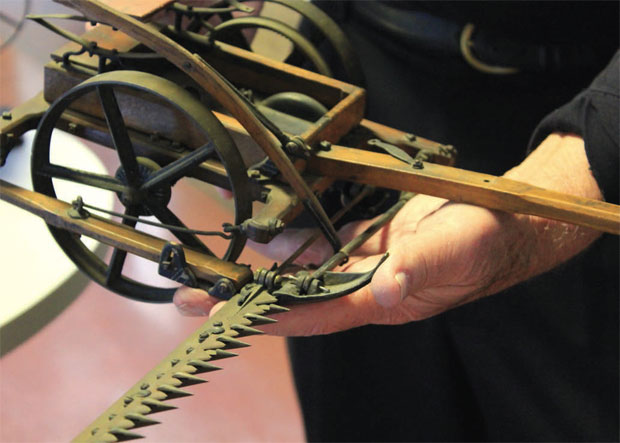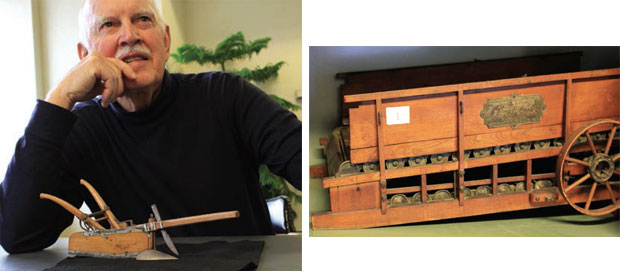
Pay dirt: Models in the CALS collection include a horse-drawn sickle mower.
Ezra Cornell,” says Gerry Rehkugler ’57, MS ’58, “is intimately connected to plows.” A professor emeritus of biological and environmental engineering, Rehkugler is a man on a mission: to preserve and display the University’s collection of antique plow models. Among his rationales is the fact that Ezra himself was a plow man: not only did he grow up on a farm, he worked as a plow salesman before making his fortune in the telegraph industry—for which he invented a plow to dig trenches for laying wire. And if that’s not enough CU street cred: the items in question, formally known as the Rau Model Plow Collection, were purchased in Germany in 1868 by none other than Andrew Dickson White. The foot-long models—about 125 of Cornell’s collection survive—were created for teaching and categorization, chronicling the global evolution of plow technology from antiquity to the mid-nineteenth century.

A German country plow (seen with Professor Gerry Reh kugler ’57, MS ’58), and a horse-powered treadmill that took gold at a competition judged by Ezra Cornell.
Once languishing in storage, the collection has been catalogued and restored under Rehkugler’s direction. Now, more than a dozen are on display in the Riley Robb lobby. Funds permitting, Rehkugler aims to house them in lighted cases built into existing alcoves in a nearby hallway; last year, he tapped a Human Ecology class to submit designs. The plan is to display them along with items from another CALS collection: dozens of sales and patent models—miniature fences, threshers, strawcutters, and the like—currently shelved in the basement near the grad student lounge. “It’s part of the history of Cornell and of this department,” says Rehkugler. “These models are beautifully done. The artisans that made them had to be extremely skilled. You could call it folk art—but it’s still art.”


